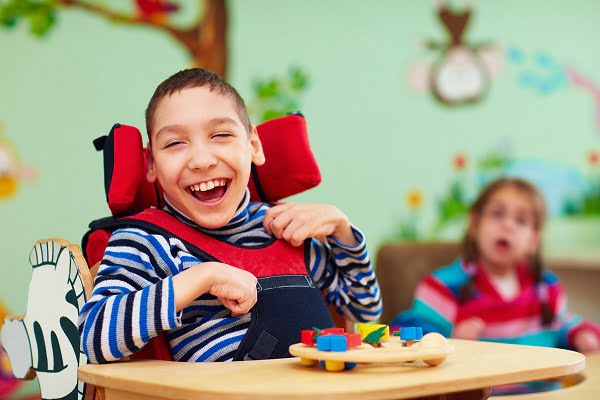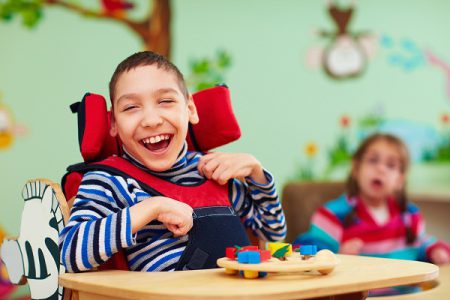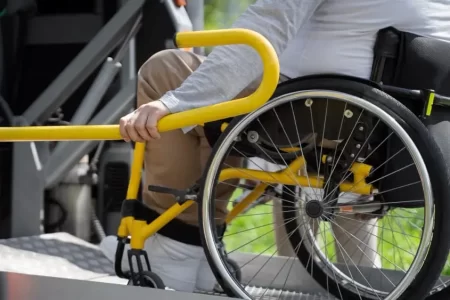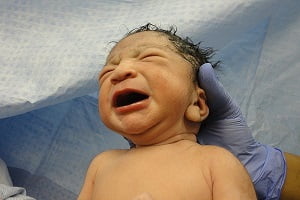
What is Cerebral Palsy?
The term “cerebral” is associated with the brain and the term “palsy” is associated with weakness or problems with body movement. It is the most common form of childhood disability. It is a disorder affecting movement, muscle tone and posture due to damage to the developing brain before birth or at the time of birth. This disease affects that area of brain which controls movement of muscles. In many cases, vision, hearing, and sensation may also be affected. It affects around 7,64,000 individuals in the United States.
Cerebral palsy is of various types and involves a variety of signs and symptoms, ranging from mild to severe. If your child has cerebral palsy or if you suspect it, it’s important to understand about the disorder, its causes, signs, and the available treatment options.
Signs and symptoms of cerebral palsy
Signs and symptoms of cerebral palsy may vary greatly. Impairments resulting from Cerebral Palsy (CP) range in severity, usually in correlation with the extent of injury to the brain. Because CP is a group of conditions, signs and symptoms vary significantly from one individual to another. Movement and coordination problems associated with cerebral palsy can include such as:
- Variations in tone of the muscles, such as being either too stiff or too floppy
- Stiffness of muscles and exaggerated reflexes (spasticity)
- Stiffness of muscles with normal reflexes (rigidity)
- Abnormal muscle coordination
- Tremors or involuntary movements, slow movement of body parts
- Delays in attaining motor skills milestones, such as sitting up alone or crawling, pushing, holding of objects
- Difficulty in walking, such as walking on toes, a crawling gait, scissoring gait with knees crossing, a wide gait or an asymmetrical gait
- Problems with swallowing , difficulty in sucking or eating, feeding/chewing
- Delays in development of speech or difficulty in speaking
- Difficulty in motions requiring precision, such as picking up a pencil or spoon
- Seizures
- Brain abnormalities associated with cerebral palsy also may lead to other neurological problems like difficulty with vision and hearing, intellectual disabilities, abnormality in touch or pain perceptions, psychiatric conditions, urinary incontinence
Types of cerebral palsy
Depending on the severity of signs and symptoms, cerebral palsy can be classified into:
Mild – Mild Cerebral Palsy means a child can move without assistance; there is no limitation of his or her daily activities
Moderate – Moderate Cerebral Palsy means a child will need braces, medications, and adaptive technology to perform his or her daily activities.
Severe – Severe Cerebral Palsy means a child will require a wheelchair and other rehabilitative measures and will have significant challenges in accomplishing daily activities.
Causes of cerebral palsy
Cerebral palsy occurs due to abnormal development of the brain or damage to the developing brain affecting the ability of the child to control his/her muscles. Earlier, people used to think that CP is caused by lack of oxygen during the birth process. But now scientists believe that it is caused due to a varied number of factors.
The brain damage leading to CP can occur before birth, during birth or even during the initial years of a child’s life during which brain development of the child occurs.
Congenital cerebral palsy
CP occurring due to brain damage that happened before or during birth is known as congenital CP. Most cases of CP (90%) are congenital and the specific cause is not known.
Risk Factors for Congenital CP
Some factors may increase the chances of a child to have CP. These are known as risk factors, however it is important to remember that having a risk factor does not necessarily mean that a child will have CP. Some major risk factors for congenital cerebral palsy are:
- Genetic mutations leading to abnormal brain development
- Maternal infections like Rubella, or German measles, Chickenpox, Cytomegalovirus, Toxoplasmosis, Syphilis, a sexually transmitted bacterial infection, Zika, a virus carried by mosquitoes, Herpes
- Lack of oxygen to the brain which may be due to difficult labor or delivery, although birth-related asphyxia is much less commonly a cause than it was earlier thought.
- Prematurity – Children born before the 37th week of pregnancy, especially if they have gestation period of less than 32 weeks, have a greater chance of getting CP
- Low birth weight – Children who weigh less than 5 pounds at birth, and especially those who weigh less than 3 pounds have a higher chance of having CP
- Multiple births – Twins, triplets, and other multiple births have a greater risk of developing CP
- Assisted Reproductive Techniques/Infertility treatments – Children born from pregnancies resulting from the use of some infertility treatments like IVF have a greater chance of having CP. It is because preterm delivery and multiple births are increased among children conceived with ART infertility treatments.
- Maternal Factors – Mothers with thyroid dysfunction, intellectual disability, or seizures have a slightly higher risk of having a child with CP.
- Birth complications – Placental abnormalities like early detachment of the placenta, uterine rupture, or problems with the umbilical cord during birth can affect oxygen supply to the baby and result in CP.
Acquired cerebral palsy
A small percentage of cerebral palsy cases are due to brain damage occurring after the birth. This is called acquired CP, and usually is associated with an infection (such as meningitis, encephalitis) or head injury. Injuries to the brain, for example, head injuries caused by motor vehicle crashes or child abuse, or problems of blood flow to the brain such as cerebrovascular accidents like stroke or bleeding in the brain associated with a blood clotting problem, blood vessels that didn’t form properly, a heart defect that was present at birth, or sickle cell disease can lead to acquired CP.
Diagnosis of cerebral palsy
If your family physician or pediatrician suspects that your child is having cerebral palsy, he will evaluate your child’s signs and symptoms, review your child’s medical history, and conduct a detailed physical examination. He may also refer you to a pediatric neurologist. He will also order a series of medical tests to make a diagnosis and rule out other conditions.
Commonly used diagnostic tests for cerebral palsy are:
Brain-imaging
Brain imaging is done to identify areas of abnormal development or damage in the brain. Some of such tests may be:
Magnetic resonance imaging (MRI) – An MRI uses radio waves and a magnetic field to identify any lesions or abnormalities in your child’s brain. This test is painless, but it’s noisy and can irritate your child, for which he may receive a mild sedative beforehand. An MRI is usually the most preferred imaging test.
Cranial ultrasound – It’s quick and inexpensive, uses high frequency sound waves to obtain images of the brain, and it can provide a valuable preliminary assessment of the brain.
Electroencephalogram (EEG) – If your child has had seizures, an electroencephalogram (EEG) is done to determine if he or she has epilepsy, which often occurs in people with cerebral palsy. In an EEG test, a series of electrodes are affixed to your child’s scalp to determine the electrical activity of your child’s brain.
Treatment of cerebral palsy
Following treatment methods are employed for cerebral palsy:
Medical treatment
Medications that can lessen the tightness of muscles are used to improve function, manage pain and complications associated with spasticity or other cerebral palsy symptoms.
It’s important to discuss about drug treatment risks with your doctor and learn whether medical treatment is appropriate for your child’s needs. Medication will be selected depending upon whether the problem affects only isolated muscles or the whole body. Drug treatments may include the following:
Isolated muscle spasticity – When spasticity is isolated to one muscle group, your doctor may recommend botulinumtoxinA (Botox) injections into the muscle, nerve or in both locations. Botox injections may help to improve drooling. Your child may need injections every couple of months.
Generalized spasticity – When the whole body is affected, diazepam, dantrolene and baclofen are used to relax stiff, contracted muscles.
Rehabilitation and physical therapy
In a child with cerebral palsy, these therapies should start in the first few years of life or soon after being diagnosed. It is one of the most important parts of treatment and involves exercises and activities to maintain or improve muscle strength, balance, and movement. A physiotherapist helps the child learn skills such as walking, sitting, running, posture maintenance, to do everyday activities such as dressing and going to school. Other physical therapies include:
Recreational therapy – Participating in art programs, cultural activities, and sports to improve a child’s physical and intellectual abilities.
Speech and language therapy – A speech therapist can help a child in learning to speak more clearly, dealing with swallowing problems, and teach new ways to communicate effectively.
Orthotic devices – Braces, splints, wheelchairs, rolling walkers and casts can be used for the affected limbs to improve movement, posture and balance
Assistive devices and technologies – These include special computer-based communication machines, velcro-fastened shoes, crutches, wheelchair, or powered scooters to make daily life easier.






